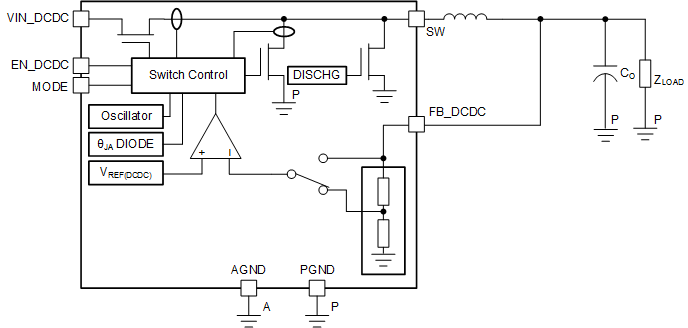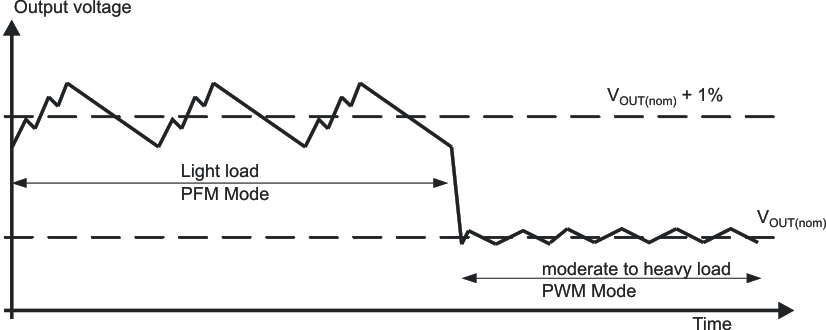ZHCSJN8 April 2019 TPS650002-Q1
PRODUCTION DATA.
7.3.1 Step-Down Converter
The step-down converter is intended to allow maximum flexibility in the end equipment. Figure 16 shows the necessary connections.
 Figure 16. DC-DC Converter Block Diagram
Figure 16. DC-DC Converter Block Diagram Externally adjustable output voltages and additional current-limit options are also possible. Contact TI for further information.
The step-down converter has two modes of operation to maximize efficiency at different load conditions. At moderate to heavy load currents, the device operates in a fixed-frequency pulse-width modulation (PWM) mode that results in small output ripple and high efficiency. Pulling the MODE pin to a DC-high level results in PWM mode over the entire load range.
At light load currents, the device operates in a pulsed frequency-modulation (PFM) mode to improve efficiency. The transition to this mode occurs when the inductor current through the low-side FET becomes zero, indicating discontinuous conduction. PFM mode also results in the output voltage increasing by 1% from the PWM mode value. This voltage positioning is intended to minimize both the voltage undershoot of a load step from light to heavy loads, as when a processor moves from sleep to active modes, and the voltage overshoot at load removal. shows the voltage positioning behavior for a light-to-heavy load step.
 Figure 17. PFM Voltage Positioning
Figure 17. PFM Voltage Positioning Pulling the MODE pin to DC ground results in an automatic transition between PFM and PWM modes to maximize efficiency.
The DC-DC converter output automatically discharges to ground through an internal 450-Ω load when EN_DCDC goes low or when the UVLO condition is met.